
1940 Famous Americans: 5c Walt Whitman
# 867 - 1940 Famous Americans: 5c Walt Whitman
MSRP:
Was:
Now:
$0.75 - $100.00
(You save
)
Write a Review

Write a Review

867 - 1940 Famous Americans: 5c Walt Whitman
| Image | Condition | Price | Qty | |
|---|---|---|---|---|
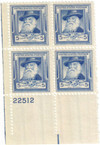
|
Mint Plate Block
ⓘ
Ships in 1-3 business days.
Ships in 1-3 business days.
$ 18.50
|
$ 18.50 |
|
0
|
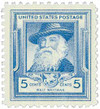
|
Mint Stamp(s)
ⓘ
Ships in 1-3 business days.
Ships in 1-3 business days.
Free with 450 Points
$ 1.25
|
$ 1.25 |
|
1
|
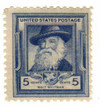
|
Mint Stamp(s)
Fine
ⓘ
Ships in 1-3 business days.
Ships in 1-3 business days.
$ 1.50
|
$ 1.50 |
|
2
|

|
Mint Sheet(s)
ⓘ
Usually ships within 30 days.
Usually ships within 30 days.
$ 100.00
|
$ 100.00 |
|
3
|
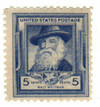
|
Mint Stamp(s)
Fine, Never Hinged
ⓘ
Ships in 1-3 business days.
Ships in 1-3 business days.
$ 1.80
|
$ 1.80 |
|
4
|
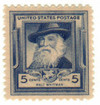
|
Mint Stamp(s)
Very Fine
ⓘ
Ships in 1-3 business days.
Ships in 1-3 business days.
$ 1.80
|
$ 1.80 |
|
5
|
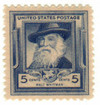
|
Mint Stamp(s)
Very Fine, Never Hinged
ⓘ
Ships in 1-3 business days.
Ships in 1-3 business days.
$ 2.00
|
$ 2.00 |
|
6
|
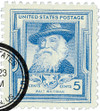
|
Used Single Stamp(s)
ⓘ
Ships in 1-3 business days.
Ships in 1-3 business days.
$ 0.75
|
$ 0.75 |
|
7
|

|
Used Single Stamp(s)
Fine
ⓘ
Ships in 1-3 business days.
Ships in 1-3 business days.
$ 1.05
|
$ 1.05 |
|
8
|
Mounts - Click Here
| Mount | Price | Qty |
|---|
U.S. #867
1940 5¢ Walt Whitman
Famous Americans Series: Poets
1940 5¢ Walt Whitman
Famous Americans Series: Poets
Issue Date: February 20, 1940
First City: Camden, New Jersey
Quantity Issued: 22,207,780
Printed by: Bureau of Engraving and Printing
Printing Method:Rotary Press
Perforation: 10 ½ x 11
Color: Ultramarine
First City: Camden, New Jersey
Quantity Issued: 22,207,780
Printed by: Bureau of Engraving and Printing
Printing Method:Rotary Press
Perforation: 10 ½ x 11
Color: Ultramarine

!






